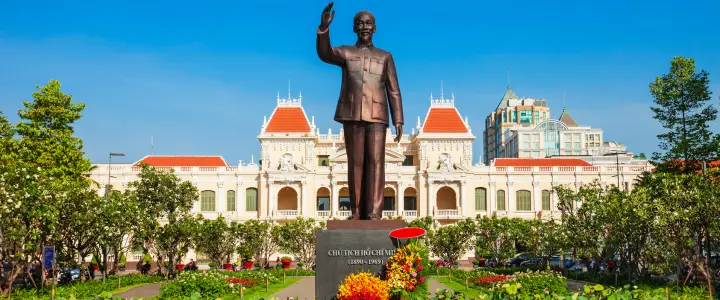Travel Alone in Vietnam:
Solo Travel in Vietnam was one of the most enriching experiences I’ve had. When I first landed in Vietnam, I felt a mix of excitement and nervousness, as this was my first solo trip. I had heard so much about the vibrant culture, breathtaking landscapes, and mouthwatering street food. The beauty of Vietnam,
from the bustling streets of Ho Chi Minh City to the serene rice paddies in Sapa, captivated me right away. It’s a place where every corner seems to tell a story, and I couldn’t wait to dive in and explore.
Before my adventure in Vietnam, I also enjoyed trips to Bali and Hong Kong. Bali amazed me with its stunning beaches and lush greenery. I loved lounging on the soft sand, exploring ancient temples, and immersing myself in the island’s rich culture. On the other hand, Hong Kong buzzed with energy, where the modern skyline meets traditional markets.
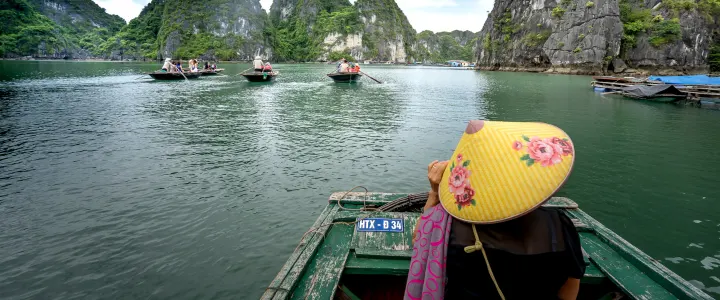
The food scene was incredible, with countless options to satisfy my taste buds. While these destinations were beautiful in their own ways, Vietnam brought a unique charm that made me feel like I was discovering a hidden gem.
As I traveled through Vietnam, I realized that solo travel is not just about exploring new places; it’s also about personal growth. I met friendly locals who welcomed me with warm smiles and shared their stories, and I connected with fellow travelers who enriched my journey.
Whether I was navigating the chaotic streets of Hanoi or sipping coffee in a cozy café in Hoi An, every moment taught me something new. Traveling solo opened my eyes to the world and pushed me out of my comfort zone, and Vietnam was the perfect backdrop for this transformative experience.
Table of Contents
Why Vietnam is Ideal for Solo Female Travellers
Unique Cultural Appeal
Vietnam is a country that offers a blend of history, beauty, and culture in every city, making it a unique destination for solo travelers. From the vibrant city life in Hanoi and Ho Chi Minh City to the serene countryside in Sapa and Phong Nha,
Vietnam captivates with its diverse experiences. Vietnamese culture celebrates hospitality and respect, which creates a friendly environment for solo travel—whether you’re exploring ancient temples, walking through markets, or engaging with locals over a bowl of pho.
Affordability for Backpacking
Traveling solo can be financially daunting, but Vietnam’s affordability eases this worry. For solo female travelers, Vietnam is especially appealing because of its low-cost accommodations, meals, and transportation options. Here’s a quick budget snapshot:
| Expense | Average Cost Per Day |
|---|---|
| Accommodation | $10 – $25 (hostels/guesthouses) |
| Meals | $3 – $15 |
| Transportation | $1 – $5 (buses, Grab rides) |
| Activities | $5 – $20 |
Hospitality and Safety
Many female travellers have shared positive experiences, emphasizing how safe they felt and how willing locals were to help. While staying aware is essential, Vietnam solo travel is generally safe. Vietnamese hospitality shines through, especially in cities like Hoi An and Hue, known for welcoming solo travelers with open arms.
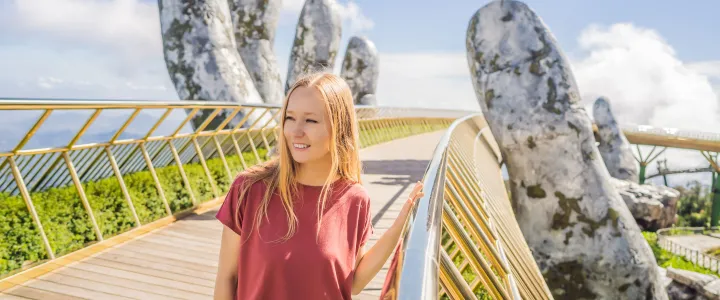
Essential Tips for Solo Female Travellers in Vietnam
Safety Tips for Women Traveling Alone in Vietnam
While Vietnam is generally safe, these practical safety tips will enhance your experience:
- Stay alert in crowded places like markets or bus stations to avoid pickpocketing.
- Use reputable transportation services like Grab or Mai Linh taxis.
- Avoid isolated areas late at night, and stick to well-lit and popular areas when out after dark.
What to Pack for Solo Travel to Vietnam
Packing efficiently is key for solo travel. Here are some essentials:
- Clothing: Pack lightweight and breathable clothes, especially if traveling during the humid season.
- Safety Items: A small, secure backpack, money belt, and copies of essential documents.
- First-Aid Kit: Include basics like bandages, pain relievers, and any personal medications.
- Cultural Considerations: Include modest clothing for temple visits and rural areas.
Navigating Language Barriers
While English is common in tourist areas, knowing a few Vietnamese phrases can be helpful. Common phrases include:
- Hello: Xin chào (seen chow)
- Thank you: Cảm ơn (cam ern)
- How much?: Bao nhiêu? (bao nyew)
For non-English-speaking areas, download Google Translate or Vietnamese language apps for seamless communication.
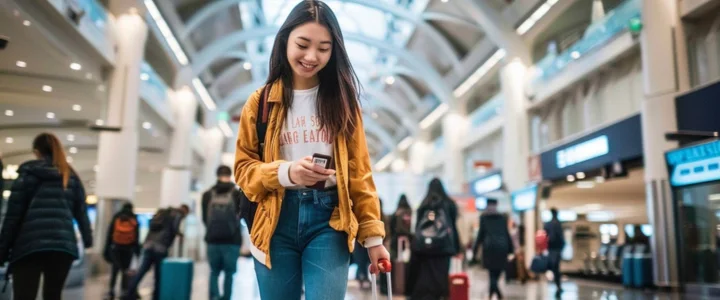
Planning Your Solo Trip to Vietnam
Best Time to Visit Vietnam
Vietnam’s geography creates diverse climates across the country. Here’s a breakdown of when to visit each region:
| Region | Best Season | Weather Highlights |
|---|---|---|
| North (Hanoi) | Oct – April | The cool, dry season is ideal for sightseeing |
| Central (Hue, Hoi An) | Feb – July | Warm, minimal rainfall, best for beach visits |
| South (Ho Chi Minh) | Dec – April | Dry season with comfortable temperatures |
Traveling during the off-peak season (May – September) can offer lower prices and fewer tourists, but be prepared for potential rain showers.
Budgeting Tips
With an average budget of $25 to $50 per day, Vietnam offers a budget-friendly experience. Here are some budgeting tips:
- Accommodation: Stay at hostels or guesthouses, which typically range from $8 to $25 per night.
- Food: Eating at local food stalls and markets can help you stay within a daily meal budget of around $10.
- Transportation: Use public buses or Grab, a popular ride-hailing app similar to Uber.
Travel Insurance for Solo Female Travellers
Invest in travel insurance to ensure a worry-free journey. Policies should cover healthcare, theft, cancellations, and even adventure activities if you plan to trek or go diving. Leading options include World Nomads and SafetyWing, both offering comprehensive coverage specifically for solo travelers
Best Places to Visit for Solo Female Travelers in Vietnam
Top Destinations and Activities
Vietnam is rich with cities and towns that offer diverse experiences:
- Hanoi: Dive into Hanoi’s Old Quarter, known for its bustling streets, temples, and vibrant street food.
- Halong Bay: Take an overnight cruise or go kayaking to experience the magic of Vietnam’s famous emerald waters.
- Hoi An: Explore this ancient town with its charming lantern-lit streets and join a Vietnamese cooking class.
- Hue: Walk through the Imperial City and explore pagodas along the Perfume River.
- Ho Chi Minh City: The country’s largest city, offering museums, bustling markets, and exciting nightlife.
Hidden Gems
For those looking to escape the crowds, Vietnam has plenty of lesser-known destinations:
- Sapa: Known for trekking through rice terraces and meeting ethnic minorities.
- Phong Nha: Ideal for caving and jungle treks through Phong Nha-Ke Bang National Park.
- Con Dao Islands: A secluded paradise, perfect for solo travelers looking to unwind.
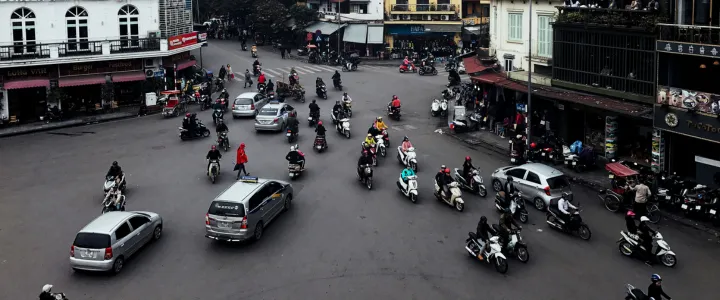
How to Get Around Vietnam Solo
Domestic Flights, Trains, and Buses
Getting around Vietnam is affordable and accessible:
- Domestic Flights: Vietnam Airlines, VietJet, and Bamboo Airways connect major cities.
- Trains: The Reunification Express offers scenic routes, especially between Hanoi and Ho Chi Minh City.
- Buses: Budget-friendly and well-connected, but consider opting for sleeper buses on longer routes.
Motorbike Travel for Solo Travelers
Riding a motorbike is a popular way to explore Vietnam, but it’s essential to stay cautious. Renting a motorbike is straightforward, and most rentals require a valid driver’s license and sometimes an International Driver’s Permit. Make sure to wear proper gear and prioritize safety on highways and busy streets.
Local Transportation Tips
Use Grab for short trips around cities, as it’s safer and often cheaper than regular taxis. Public buses are another affordable option, though routes may require some pre-planning.

Cultural Etiquette and Tips for Solo Women in Vietnam
Understanding Vietnamese Culture
Vietnam has rich customs that solo female travelers should understand:
- Respect is paramount in Vietnamese society. Be mindful of this when interacting with locals, especially elders.
- Greetings: Nodding or slight bowing is common; physical contact is generally minimal.
Respectful Dress Codes
Wear modest attire when visiting temples or religious sites. In urban areas, casual and comfortable clothing is acceptable, though dressing respectfully will make a positive impression, especially in rural regions.
Navigating Local Markets and Bargaining
Markets are a part of Vietnamese life, offering everything from souvenirs to fresh produce. When bargaining:
- Start with half the price quoted and negotiate upward.
- Maintain a friendly tone and avoid haggling over trivial amounts.
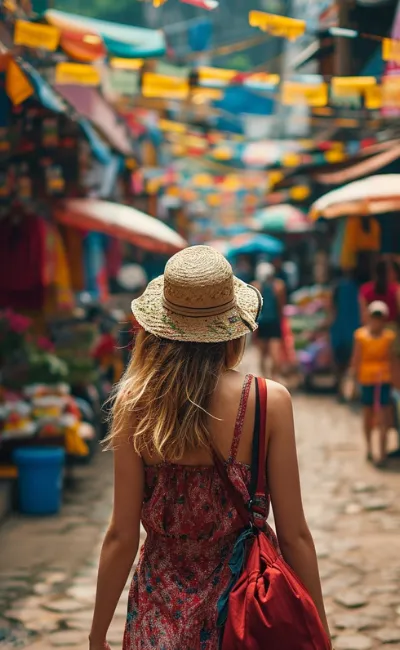
Top Food Experiences for Solo Travelers in Vietnam
Vietnamese Street Food Must-Try List
Street food is essential to the Vietnamese travel experience. Must-try dishes include:
- Pho (noodle soup)
- Banh Mi (Vietnamese sandwich)
- Bun Cha (grilled pork with noodles)
- Cao Lau (noodles in Hoi An)
Local Cooking Classes and Food Tours
Sign up for cooking classes, especially in Hoi An or Hanoi. These classes allow you to learn local cooking techniques and meet other travelers. Most classes include market visits, giving you insight into the ingredients behind Vietnamese dishes.
Socializing and Meeting Other Travelers
Finding Fellow Travelers as a Solo Woman
Staying at hostels or guesthouses is an excellent way to meet other travelers. Recommended spots include:
- Vietnam Backpacker Hostels (in Hanoi and Hue)
- The Common Room Project (Ho Chi Minh City)
Joining Group Tours or Day Trips
Joining group tours for excursions to places like Halong Bay or the Mekong Delta can be a good way to socialize and enjoy the benefits of guided travel.
Health and Wellness Tips for Solo Travel to Vietnam
Health and Safety Precautions
- Stay hydrated, particularly during hot months.
- Vaccinations recommended: Hepatitis A, Typhoid, and Tetanus.
Access to Medical Help
Vietnam has well-equipped hospitals in major cities. Pack a small first-aid kit with bandages, ibuprofen, and any necessary medications.
Solo Travel Safety in Vietnam
Avoiding Scams and Common Tourist Traps
To avoid scams:
- Avoid motorbike taxi drivers offering “too good to be true” prices.
- Stick with licensed taxis or use Grab.
Emergency Contacts and Resources for Solo Women
Keep a list of emergency numbers:
- Police: 113
- Fire: 114
- Ambulance: 115 Save copies of essential documents and contact information for local embassies.
Vietnam Solo Travel Budget Breakdown
- Accommodation: $10 – $25/day for hostels, $25 – $50 for budget hotels
- Food: $10 – $15/day for three meals
- Transportation: $5 – $10/day for public transport or Grab rides
Conclusion
Solo travel in Vietnam is a rewarding experience filled with adventure, learning, and cultural immersion. With an open mind and a cautious approach, solo female travelers can fully enjoy the journey while making unforgettable memories. Safe travels, and enjoy every moment of your solo trip to Vietnam!
FAQs for Solo Travel to Vietnam
1. Is Vietnam safe for solo female travelers?
Yes, Vietnam is generally safe for solo female travelers. Many women travel to Vietnam on their own and report positive experiences. However, like any destination, it’s essential to stay cautious, especially in busy areas like markets or while using public transportation. Staying aware, avoiding isolated areas at night, and choosing reputable accommodations can help ensure a safe trip.
2. Is Vietnam safe for American tourists?
Yes, Vietnam is safe for American tourists. The Vietnamese people are known for their hospitality and friendliness toward travelers of all backgrounds, including Americans. While Vietnam is welcoming, it’s still wise to follow typical travel safety precautions, like securing belongings and being aware of your surroundings.
3. Is it safe to travel in Vietnam on your own?
Absolutely, Vietnam is considered safe for solo travelers. The country has a well-established tourism infrastructure, especially in popular areas like Hanoi, Ho Chi Minh City, and Hoi An. By sticking to well-trafficked areas, choosing reliable transportation, and following basic safety practices, you can enjoy a fulfilling and safe experience.
4. Is it safe to travel alone in Ho Chi Minh City?
Yes, Ho Chi Minh City is generally safe for solo travelers, including those exploring alone. However, it’s a bustling city, so staying alert in crowded areas can help avoid petty theft. Taking licensed taxis, staying in well-lit areas, and choosing safe accommodations are all good practices for enjoying your time in the city.
5. Do they speak English in Vietnam?
English is widely spoken in tourist areas, especially in major cities like Hanoi and Ho Chi Minh City. In places frequented by international travelers, such as hotels, restaurants, and tour agencies, you’ll usually find English-speaking staff. However, learning a few basic Vietnamese phrases can be helpful in rural areas.
6. Do American citizens need a Vietnam Visa?
Yes, American citizens need a visa to enter Vietnam. You can apply for a visa online through the official Vietnamese government website or obtain one at a Vietnamese embassy or consulate in the U.S. Ensure you check visa requirements well before your travel date, as processing times may vary.
7. How to get a visa for Vietnam?
You can get a visa for Vietnam through several methods:
- E-Visa: Apply for an e-visa online, which is available for 30-day single-entry visits and is processed within 3-5 business days.
- Visa on Arrival: Available if you’re flying into Vietnam and have applied for a visa approval letter online.
- Embassy/Consulate: Apply directly at a Vietnamese embassy or consulate for various visa types, especially if you plan a longer stay.
Be sure to bring a valid passport with at least six months of remaining validity and two passport-sized photos if applying at the embassy.
8. Is Vietnam cheap or expensive?
Vietnam is generally considered an affordable travel destination. While luxury hotels and fine dining can be expensive, budget-friendly options are plentiful. Average daily expenses for budget travelers range from $25 to $50, covering accommodations, meals, and local transportation. Street food and local markets also offer affordable options.
9. Is it okay to wear shorts in Vietnam?
Yes, wearing shorts is generally acceptable, especially in tourist areas and large cities. However, in rural areas and religious sites like temples and pagodas, it’s best to dress more modestly. If visiting a temple, cover your shoulders and knees to show respect for cultural customs.
10. What should I be careful of in Vietnam?
When traveling in Vietnam, keep these tips in mind for a safe experience:
- Avoid scams by using reputable transport options and avoiding overly persistent street vendors.
- Secure your belongings, especially in busy areas, to avoid pickpocketing.
- Respect local customs by dressing modestly in religious places and being polite.
- Stay cautious with street food, as hygiene standards vary. Look for busy stalls as they tend to have high turnover and fresh food.
11. Which part of Vietnam is safest?
All regions of Vietnam are generally safe for tourists, but some areas are especially popular and accessible for solo travelers:
- Hoi An: Known for its small-town charm and friendly atmosphere, Hoi An is a favorite for solo travelers.
- Da Nang: A growing destination with beautiful beaches and low crime rates.
- Hanoi: While it’s a bustling city, Hanoi is safe for tourists and offers many cultural attractions. These areas are well-developed and tourist-friendly, making them comfortable and secure choices for visitors.


